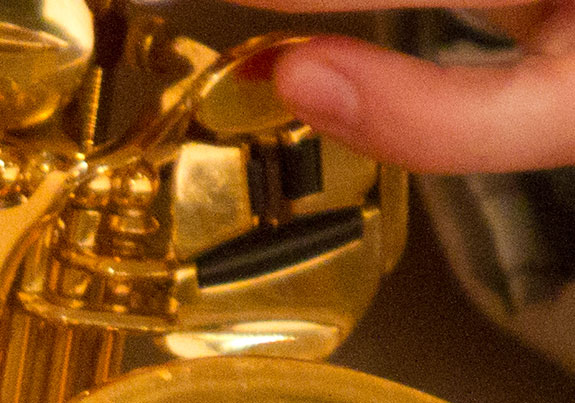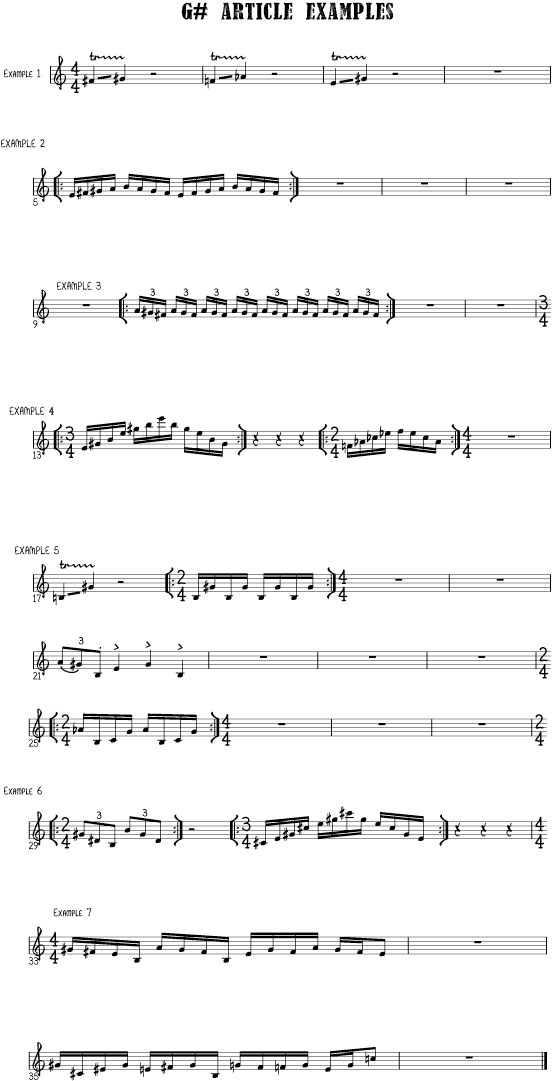How Your G# Mechanism Can Get You Around the Horn Way Faster

Not all that much has changed since Adolphe Sax first invented the instrument that bears his name, but fortunately there have been a few small technical improvements that can make your musical life much easier if you know how to use them. This will be the first of several columns on these specific mechanisms.
Introducing Your Pinkie’s New Best Friend
So first, let’s give you all a short introduction. If you look at your saxophone, you’ll see the pad that comes up when you finger the G# key is one of the only pads on the main stack of the horn which stays closed when not being activated. (This is the reason that it is so prone to sticking.. more on that in one of my upcoming columns).
Now, if you press any key of the right hand down while continuing to press the G# key, you’ll see that pad come back down along with those keys. This is known as the articulated G# mechanism. Now, notice how if you press the keys for the low C#, B, and Bb with your left hand pinky without pressing down anything in the right hand, the G# pad will come up. This is known as the tab mechanism, and it allows you to play a G# using any of those keys in the left-hand pinky stack. (Note: if you’re playing a saxophone made before about 1930, you might not have the tab mechanism on your horn. It’s very easy for a repairman to install it, so ask your technician if he or she knows how to do so).
A Whole New World
Now, I know that to many of you this might not seem like a big deal, but once you actually understand these two mechanisms, they can save your fingers a lot of unnecessary work and make a lot of things easier, smoother and faster.
Let’s first start with the articulated G# mechanism. First, try to trill from F# to G#. Notice that thanks to this mechanism, you can hold down the G# key the whole time. Now this applies to trills to G# from D, D#, E, F, and low C as well. (see example below #1). You don’t need to lift the G# key to get to the other note.
Some Examples
Now let’s talk about how we can use it with simple scales and passages that derive from them. Let’s play the first five notes of an E Major scale up and down. If you try to do this fast, you’ll notice just how much extra work the tab mechanism saves you by allowing you to keep the G# key down through the whole passage. (see example 2 below)
Now try playing 3-2-1 in F# minor very fast, also pressing the G# key down the whole time. (see example 3)
And how about some basic arpeggios using this mechanism? (see example 4)
Once you get comfortable using this mechanism, you’ll find that if you’re playing anything fast in a key that has three sharps or more in the key signature, you can leave the G# down almost the entire time.
Practical Uses for the Tab Mechanism
The most obvious uses for this would be some trills from our lowest notes to G#, or some passages that switch fast from one note to the other. (see example 5)
And how about some basic arpeggios, you say? (see example 6)
And you might even find some passages where you can take advantage of both mechanisms.

Putting it into Practice
The Universal Method for Saxophone has a couple of pages dedicated to use of these keys. Otherwise, I suggest going through your etude books and finding passages where these mechanisms might be of help.
There are also books filled with arpeggios, like Oliver Nelson’s Patterns for Saxophone, which can be of help. Or just play through anything with lots of sharps and I’m sure you’ll find lots of use for these new tricks.
Click here to download a printable PDF containing the examples.
Learn with and Listen to Sam
Sam Sadigursky is currently offering online lessons through Skype and private lessons in NYC. He has given improvisation clinics across the U.S., is a regular guest professor at Hunter College, and currently performs internationally with Darcy James Argue’s Secret Society, Folklore Urbano, and others. His new book, 12 INTERVALLIC ETUDES for Saxophone, is available here. His albums can be purchased at http://samsadigursky.bandcamp.com. To find out more, visit SamSadigursky.com.






November 17, 2013 @ 1:17 pm
Sounds like a lot of terrific stuff to learn as Im also a beginner that needs lots of tips to make me play more efficiently,and of course have more fun at it
April 18, 2021 @ 5:33 pm
What would cause that pad to not be in the closed position when the G# pinky key is not pressed?
I just received a new soprano sax from my parents and that pad is default open instead of closed.